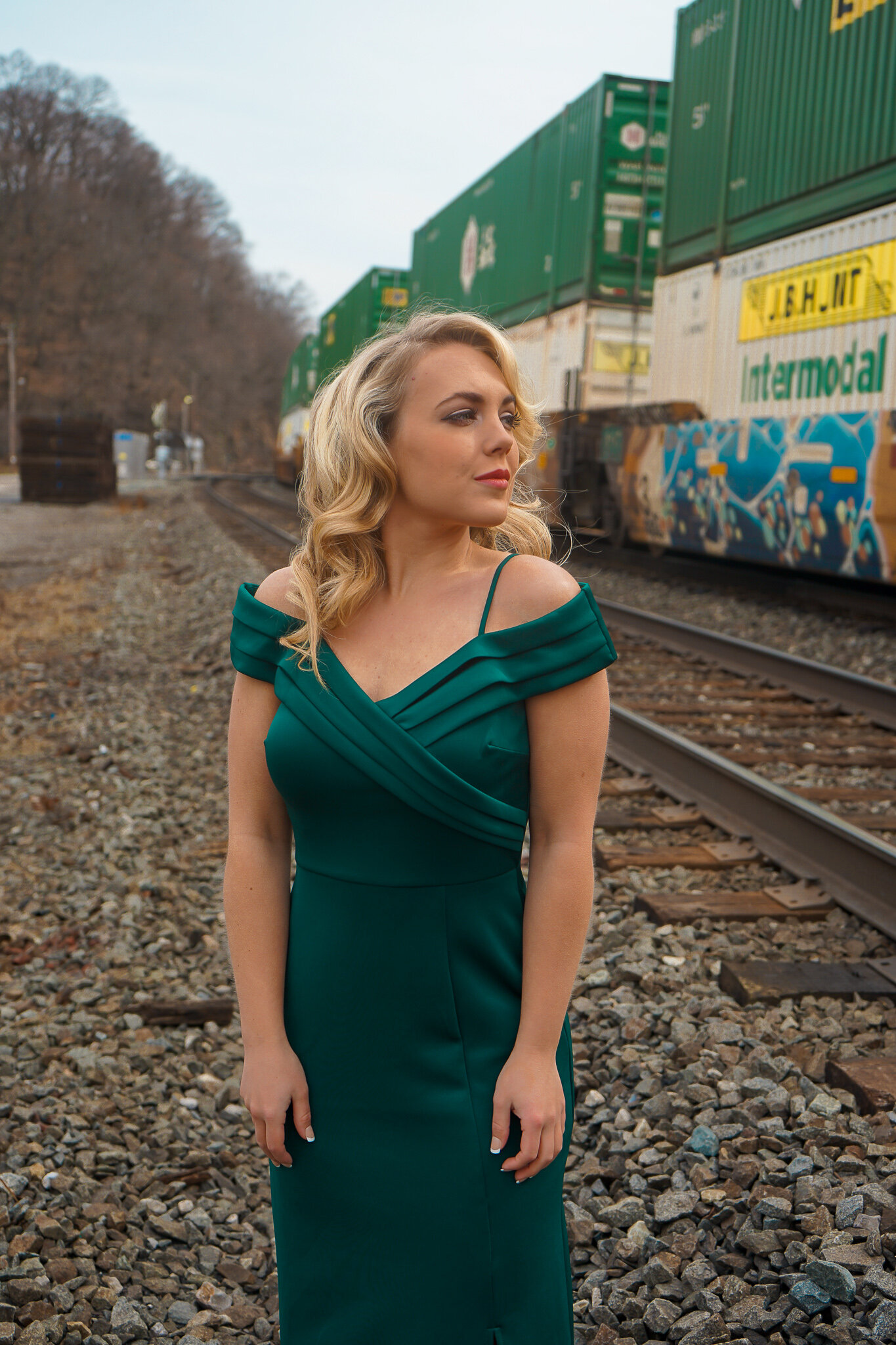Heimweh
A Graduate Recital featuring pieces that express deep yearning for a place of peace, light, and belonging. Scroll below for the full program listing with program notes.
March 14th 5pm CST, 6pm EST
Jennifer Allor, piano & Jade Garcia, clarinet
CLICK HERE TO WATCH THE LIVESTREAM
George Frideric Handel’s Rinaldo (1711) was the first Italian language opera written for English audiences in London. The plot is set during the First Crusade. The knight, Rinaldo, professes his love to Almirena, who is the daughter of the leader of the Crusades. In this aria, “Combatti da forte,” Almirena encourages Rinaldo to fight fiercely with gallantry. The aria is in da capo form, and the return of the A is decorated in order to rally further enthusiasm.
Handel’s Giulio Cesare (1724) is one of today’s most often performed Baroque operas. The story loosely chronicles several events from the Roman Civil War in Egypt. Cleopatra sings “V’adoro pupille,” in an effort to seduce Cesare after inviting him to the palace. She delivers the da capo aria in disguise as “Lidia,” only revealing her true identity to Cesare after he has agreed to meet her. In “Non disperar, chi sa?,” Cleopatra mercilessly bullies her brother Tolomeo after asserting her dominance in their quest for heir to the throne. She sarcastically remarks that Tolomeo may have a chance at finding love instead of power. But then again, maybe not.
“Je suis encor” is the entrance aria sung by the title character of Jules Massenet’s Manon. Massenet introduces the Manon’s youthfulness in this aria. Manon has just arrived in her cousin’s village on her way to live in a convent. This is Manon’s first time travelling. She describes her fascination and glee with everything around her to her cousin.
In his mélodie, “O vous qui passez,” Massenet conveys the pain of unrequited love with a lyrical melody of deliberate and slow ascending arpeggios. The piano echoes the voice on the off beats, mimicking the steps of someone walking away.
Massenet composed “La melodies des baisers” for mezzo-soprano Lucy Arbell, with whom he pursued somewhat of a romantic friendship. While Massenet was married at the time, he entertained this precarious friendship, creating a great deal of stress within his marriage. The song is a vibrant expression of romantic affection as it relates to the blossoming of nature in springtime.
W.A. Mozart’s aria “Ach, ich fühl's,” is sung by the character, Pamina in The Magic Flute. Pamina is the daughter of the villainous Queen of the Night. Tamino is the man she loves that was originally enlisted by her mother to rescue her from Sarastro. In this aria, Pamina is lamenting that Tamino will not speak to her. Pamina assumes that Tamino no longer loves her, when in fact, he is undergoing Sarastro’s trials of wisdom in order to win her hand in marriage.
Lori Laitman’s I Never Saw Another Butterfly is based on a collection of poems written by Jewish children that were imprisoned within Terezin during the Holocaust. All of the child poets were eventually killed during the Holocaust after being deported from the Terezin ghetto to various death camps. Each song is set rather lyrically, except for the second piece which gives a distinct nod to the musical idioms of Jewish folk song and Klezmer style. The poems offer a range of sentiments, including grief (The Butterfly, The Garden, The Old House), optimism (Birdsong), and resiliency (Yes That’s the Way Things Are), and harsh realism (Man Proposes, God Disposes).
Louise Reichardt was a German composer, voice teacher, and conductor. She was informally educated by her father. Prominent Romantic philosophers and writers frequented her home and were impressed with her song setting capabilities. Many of them provided poetic texts for her songs including Ludwig van Tieck, Friedrich Gottlob Wetzel, and Novalis. Louise suffered many personal losses. Reichardt was betrothed to be married two separate times, and on both occasions, her fiances passed away before the day of their wedding. She turned to God and was a devout Christian woman. Faced with the responsibility of supporting her family following her father’s death, she relocated to Hamburg to teach voice lessons, conduct a women’s chorus, and continue composing. She was successful in her endeavors.
“Das Madchen am Ufer,” or “The Girl on the Shore” with text provided by Karl Phillip Conz, paints the scene of a woman watching a bird from the shore. The woman, talking in first person narration, talks of how the bird has access to heaven while she is confined to Earth. Louise Reichardt depicts this heavenward yearning musically as well. The piano plays a consistently pulsing rhythmic ostinato which allows for the ensemble and listener to feel a distinct forward motion.
Perhaps the poet Reichardt had the closest relationship with, was Ludwig van Tieck. Both Tieck and Reichardt suffered tremendous loss throughout the course of their lives, and both were devout Christians. “Poesie von Tieck, or “Ruhe, Süßliebchen im Schatten” is one of their many collaborative efforts. It is a lullaby to a romantic partner. The text and musical setting offer truly heartfelt sincerity. The falling melody in the voice lulls the object of the singer's affection into a slumber. As is typical in Romantic poetry, images of nature are utilized to evoke spiritual connection.
Romantic poet Friedrich Gottlob Wetzel provided the text for Reichardt’s “Heimweh,” meaning homesickness has also been entitled, in some editions as “Hoffnung,” meaning hope. It is unclear whether a particular title is incorrect, or whether Reichardt may have assigned a different title than Wetzel. Nevertheless, in the text, Wetzel makes a metaphor for spring representing emotional renewal and peace in a divine Creator following a period of hardship (winter). It is quite evident that Reichardt may have felt her own journey closely aligned with the poetry. Reichardt offers a strophic setting of the two-verse poem and accentuates Wetzel’s envelope verse (“wenn die Rosen bluhen” appears at the beginning and end of each verse) with a simple, folk-like musical setting.
“Die Blumen der Blume” is a Romantic poem about the birth of Jesus. Poet Otto Phillip Runge, casts a metaphor comparing the Holy Child to a blooming flower. “Die Blumen” is a set strophically by Reichardt. Underneath the lyrical melody, the piano plays a gentle rocking pattern.











